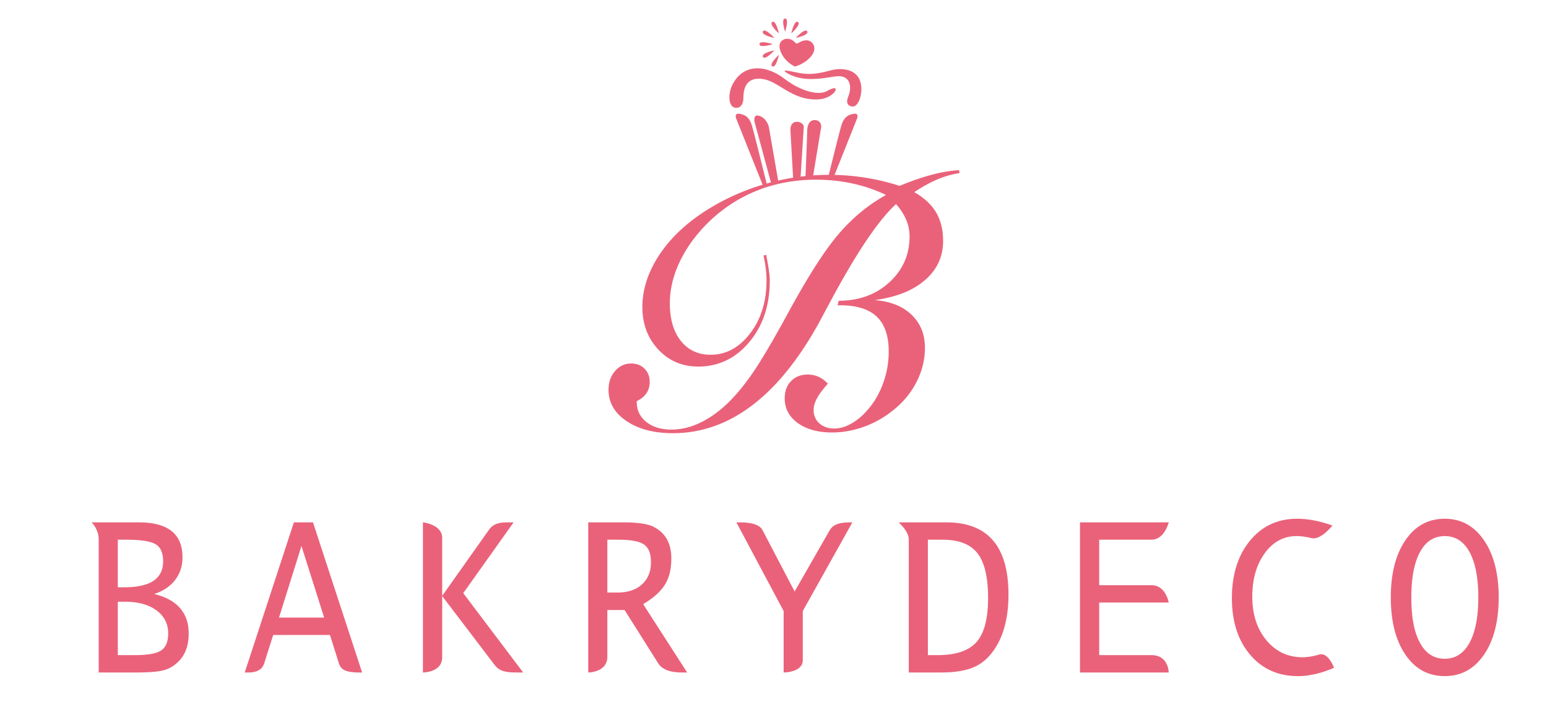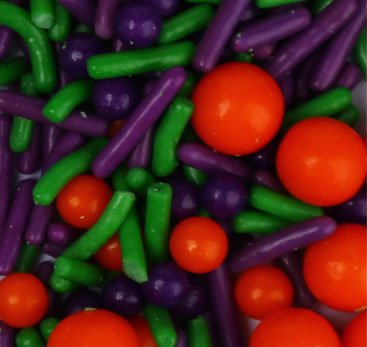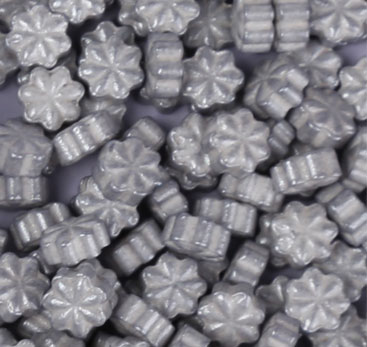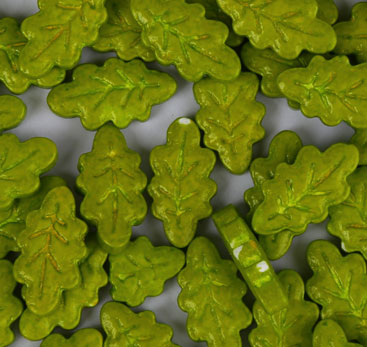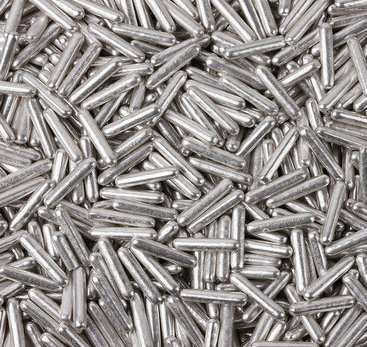How to Use Gelatin Sheets
Want desserts that taste delicious and look like they came from a bakery? Learn how to use gelatin sheets in your cakes, mousses, and jellies into smooth, stable, and beautiful works of art in no time at all—without the hassle!
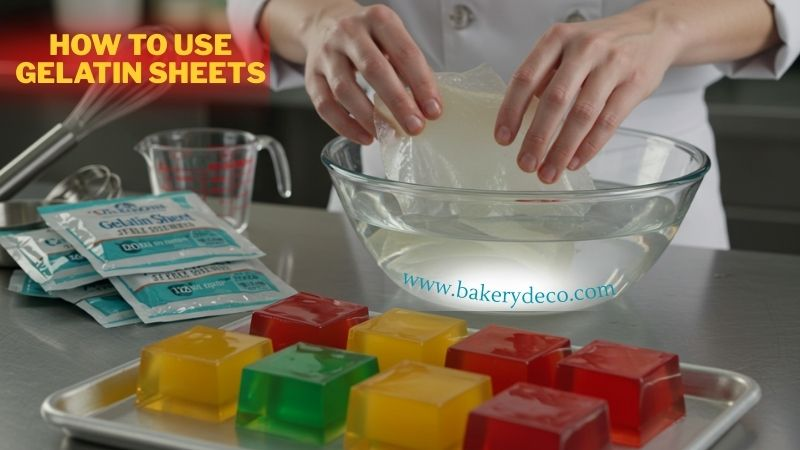
Gelatin sheets make desserts that are always of the same quality and taste. They are great for home bakers or businesses, and learning how to use gelatin sheets can improve your food, from cheesecakes to jellies. Here I will discuss how to use, buy, and ratio things correctly.
What are gelatin sheets?
Leaf gelatin, or gelatin sheets, are thin, see-through sheets made from animal collagen, usually pork or beef. Professional chefs and bakers love these sheets because they give exact measurements and dissolve easily, unlike powdered gelatin. Each sheet has a set gelling strength, which is usually measured in "bloom" (standard sheets typically have 125–250 blooms), so the results are always the same.
Are gelatin sheets vegetarian?
No, traditional gelatin sheets are not vegan because they are made from animal collagen. For plant-based recipes, there are vegetarian options like agar-agar or carrageenan sheets. Businesses that serve a wide range of dietary needs can attract more customers by offering both gelatin and vegetarian options. Check the labels on the products to know where they came from.

Gelatin sheets make desserts that are always of the same quality and taste. They are great for home bakers or businesses, and learning how to use gelatin sheets can improve your food, from cheesecakes to jellies. Here I will discuss how to use, buy, and ratio things correctly.
What are gelatin sheets?
Leaf gelatin, or gelatin sheets, are thin, see-through sheets made from animal collagen, usually pork or beef. Professional chefs and bakers love these sheets because they give exact measurements and dissolve easily, unlike powdered gelatin. Each sheet has a set gelling strength, which is usually measured in "bloom" (standard sheets typically have 125–250 blooms), so the results are always the same.
Are gelatin sheets vegetarian?
No, traditional gelatin sheets are not vegan because they are made from animal collagen. For plant-based recipes, there are vegetarian options like agar-agar or carrageenan sheets. Businesses that serve a wide range of dietary needs can attract more customers by offering both gelatin and vegetarian options. Check the labels on the products to know where they came from.
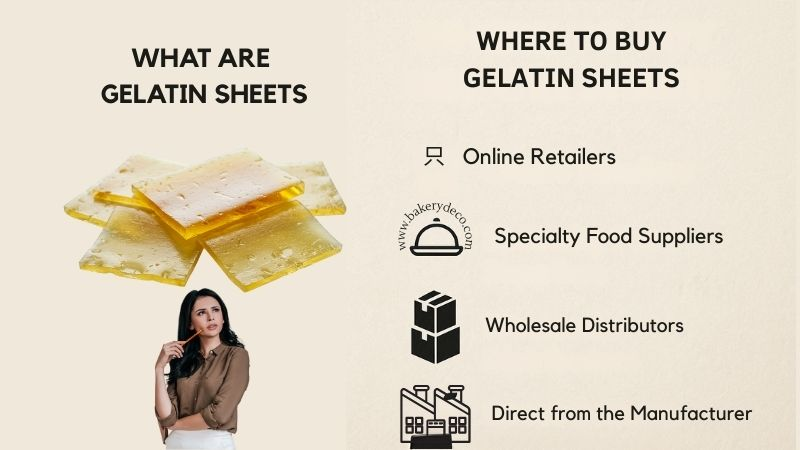
Using Gelatin Sheets:
To learn how to use gelatin sheets, you need to know how to prepare them, dissolve them, and mix them into recipes. This is a guide that shows you how to do it step-by-step.
How long do you let the gelatin sheets soak?
Put the gelatin sheets in cold water for 5 to 10 minutes, or until they are easy to use. To wet the sheets, wet them. This helps them dissolve evenly when heated. Don't let it sit for too long, or it won't work as well.
Do you put gelatin sheets in hot or cold water?
Always keep gelatin sheets in cold water. Using hot water on the sheets could make them dissolve unevenly. Take out any extra water after soaking and add the sheets to a warm liquid.
How to use gelatin sheets in certain recipes
Let's look at some ways to use gelatin sheets for whipped cream, jelly, and cheesecake. With these tips, your business can make desserts that people will love like a pro.
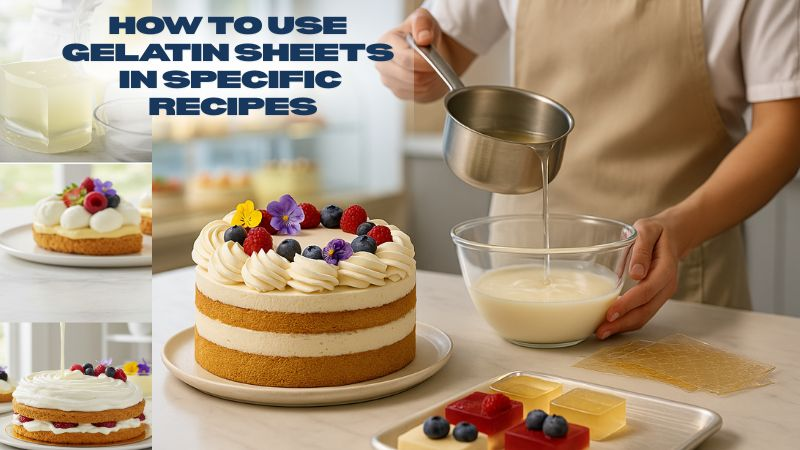
How to put gelatin sheets in whipped cream
Ø Stabilized whipped cream holds its shape longer, making it suitable for piped decorations or desserts with layers.
Ø Soak the gelatin: Put a sheet in cold water for 5 to 10 minutes.
Ø Dissolve the gelatin: Remove any extra water and melt the sheet in 2 tablespoons of warm milk or cream. Let it cool down for a while.
Ø Prepare the cream: Whip up two cups (480ml) of cream. You can add sugar and vanilla to taste.
Ø Add gelatin: Slowly pour the cooled gelatin mixture into the whipped cream. Whip until the peaks are stiff.
Ø For best results, put the whipped cream in the fridge for 30 minutes before piping or spreading it.
This method keeps your whipped cream firm for hours, which is suitable for cakes, pastries, or dessert displays in your wholesale business.
How to use gelatin sheets to make jelly
Follow these simple steps to make jelly with gelatin sheets that set perfectly. First, figure out how many gelatin sheets you will need. Usually, four sheets (about 10g) set 500ml of liquid to a standard wobble. Bloom strength changes, so check the package.
1. Soak the sheets: Put them for 5 to 10 minutes, or until they are soft and flexible. Don't use hot water, as it can weaken gelatin.
2 Prepare the liquid: Put the liquid you want to use (like fruit juice, water, or flavoured syrup) in a saucepan and heat it gently. To keep the gelatin's setting power, it should be warm (about 50°C/122°F) but not boiling. Add sugar if you need it. Ensure there are no lumps left.
3. Pour and set: Put the mixture in moulds or dishes. Let it cool to room temperature, then put it in the fridge for 4 to 6 hours to set.
4. Unmold and serve: out of the water and serve: Dip them in warm water for a few seconds to loosen them, then turn them over to a plate. Serve cold.
Add more sheets to enlarge the jelly firmer, or fewer sheets to keep it softer. Try different flavours and layers to mix things up. Clean moulds make it easy to remove things. Have fun with your jelly!
How to use gelatin sheets in cheesecakes
Using gelatin sheets to prepare a cheesecake gives it a smooth texture and professional finish. It is suitable for preparing desserts in bulk. Here's a short guide:
1. Soak the gelatin: For a standard 9-inch cheesecake, use 2 to 3 sheets of gelatin (4 to 6g, 160 to 200 blooms). Put the sheets in cold water for 5 to 10 minutes, or until they are soft and easy to work with.
2. To melt the sheets, stir them in ¼ cup of warm (not boiling) liquid, like cream, milk, or fruit juice, until they are completely dissolved. Let it cool a little.
3. Prepare the cheesecake mixture: Mix the cream cheese, sugar, and other ingredients, like vanilla and lemon zest, until smooth. Whip in heavy cream for a light texture in no-bake cheesecakes.
4. Incorporate gelatin: Slowly fold the cooled gelatin mixture into the cheesecake batter, mixing it well so that it is evenly distributed.
5. Set the cheesecake: Pour the mixture into a pie crust and chill it for at least 4 to 6 hours, or until it is completely set.
Ratio of Gelatin Sheets to Liquid: For a firm set, use one sheet for every one to one and a half cups of liquid. This method ensures that the cheesecake stays stable and can be cut into slices. It's excellent for making cheesecake at once and showing off desserts.
What is the ratio of gelatin sheets to liquid?
The amount of liquid to gelatin sheets depends on the strength of the sheets (usually 160 to 200 blooms) and how firm you want your dessert to be. It is an excellent guide.
Standard Ratio (160 sheets of blooming gelatin)
§ One sheet (about 2 g) binds 100 ml (3.4 fl oz) of liquid softly, like mousse or pannacotta.
§ One sheet (about 2 g) holds 70-80 ml (2.5-2.7 fl oz) of liquid firmly, like jelly or gummies.
§ Soft sets (creams, mousses): 1 sheet for every 100 ml of liquid
§ Medium set (custards, panna cotta, cheesecakes): 1 sheet for every 80 ml of liquid
§ Firm set (jelly, terrine, gummies): 1 sheet for every 70 ml of liquid
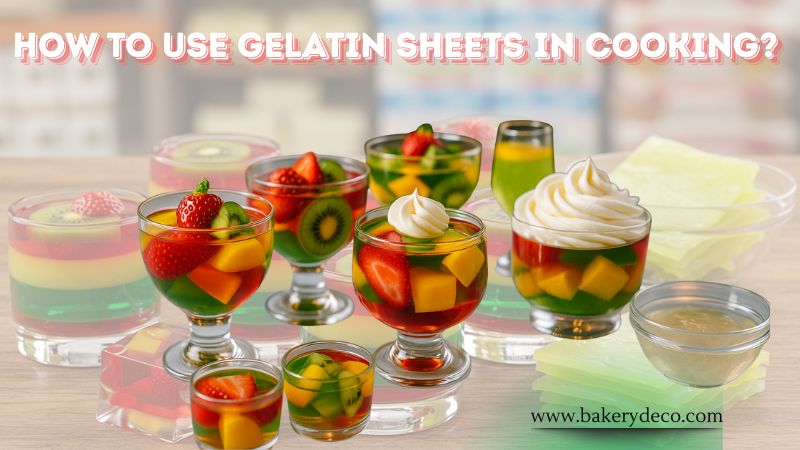
How to use gelatin sheets in cooking?
You can use gelatin sheets in many ways in the kitchen. They can turn liquids into gels for desserts, savoury dishes, and more. Here is a short guide to utilising them well, based on jelly making:
ü Know how firm gelatin is: Gelatin sheet comes in different bloom strengths, like bronze, silver, and gold. Bloom strength is usually between 125 and 250. Look at the packaging for instructions. Four to six sheets (10 to 15 grams) usually require 500 millilitres of liquid to achieve a standard firmness.
ü Soak the sheets in cold water for 5 to 10 minutes, or until they are soft and easy to work with. Use enough water to cover, but don't soak it too long because that will weaken the gelatin.
ü Dissolve the gelatin by gently heating your liquid base (like fruit juice, cream, or broth) to about 50°C/122°F. It should be warm, but not boiling.
ü Squeeze out the extra water from the wet sheets and mix them into the warm liquid. It should take about 1–2 minutes. To keep the setting power on, don't let it get too hot.
Desserts: For panna cotta, mousse, or jelly, pour the mixture into moulds and chill for 4 to 6 hours. Let each layer of a layered dessert set before adding the next.
Savoury dishes: Mix gelatin with broth to prepare aspics or terrines. Please put it in the fridge until it hardens.
Stabilising: Mix into whipped cream or sauces to give them structure without hardening.
Unmolding: Quickly dip the moulds in warm water to release them. Serve cold or as needed.
Tips: Change the number of sheets to get the texture you want—use more for firmer gels and fewer for soft ones. Strain the mixture to make it smooth. Fresh pineapple, kiwi, or papaya should be avoided because their enzymes break down the gelatin. Instead, use the cooked or canned versions. Put the sheets you don't need in a cool, dry place.
Conclusion:
gelatin sheets are a flexible and professional way to create delicious desserts. From cheesecakes to mousses, learning how to prepare them will give you consistent results that improve both home baking and wholesale baking. It is done with accuracy, clarity, and a long-lasting structure.
